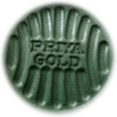
The cookie and cracker manufacturing industry includes 300 companies for a combined annual revenue of about $10 billion. Cookie and cracker manufacturing begins by grinding starter ingredients like sugar, oils, and flavoring in industrial mixers. Following the initial blend, workers mix in water and bonding agents to form the dough. After the dough is mixed, it is lifted into a hopper and spread onto trays. Once on the tray, the product is cut or rotary cut into shapes. These pieces are then put on conveyor belts for baking and flavoring. Finished products are then packed per their requirement. Large companies include Kraft’s Nabisco subsidiary, Kellogg’s, Campbell’s Pepperidge Farms, Lance, and Interbake Foods.
The industry is highly concentrated with the top 50 companies accounting for 90% of the total revenue. Geographically, food manufacturing is located across the country. Demand is driven by population growth, health concerns, and taste. These products are considered “impulse” consumables and compete against fresh-baked items, fast food, and the candy and chip industry. Companies are profitable by having efficient operations and good marketing groups.
Dairy
The US dairy manufacturing industry consists of 1200 companies that have a combined annual income of $60 billion. The four major segments in this industry are fluid milk, cheese, frozen desserts, and butter. Most companies focus on one segment, although some of the largest companies play in all four segments. Large companies include Land O Lakes, Dean Foods, and Dairy Farmers of America. Because of the nature of the perishable raw materials most production is localized around their raw material supply.
The industry is rapidly consolidating with the 50 largest companies holding 75% of the market. Changes in consumer income drive demand for various types of dairy food. The profitability of individual companies depends on efficient operations and marketing, as milk is a commodity. Manufacturing is standardized across the segments and highly automated.

Key Benefits of Teflon™ industrial coatings:
Typical Applications:
 Fast food restaurants – helps reduce recoating frequency on cooking equipment
Fast food restaurants – helps reduce recoating frequency on cooking equipmentFor more information on the coating markets for Teflon™ industrial coatings and resources available, click here.